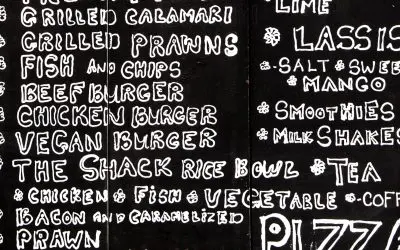Funnel marketing: a beginner’s guide for pricing
Why funnel marketing matters for pricing
Funnel marketing helps you understand how prospects move from first hearing about you to making a purchase. By tailoring pricing and offers at each stage, awareness, interest, decision, and loyalty, you ensure that potential clients see the right price point and value proposition at the right moment. This prevents underpricing, confusion over package tiers, or leaving money on the table by not capitalizing on customer readiness.
Stages of a marketing funnel
A typical funnel has four main stages:
- Awareness: Prospects discover your brand through content, ads, or referrals.
- Interest: They engage with educational material, blogs, webinars, or social media posts, to learn about your solutions.
- Decision: Prospects compare options, review pricing, and consider buying. This is where pricing clarity is critical.
- Loyalty: After purchasing, satisfied clients can become repeat buyers or brand advocates.
Aligning pricing with funnel stages
Your pricing strategy should match prospect expectations at each stage:
- Awareness stage offers
Provide free or low-cost resources, ebooks, checklists, or mini-courses. These “tripwire” offers introduce value without a big commitment, warming prospects up to higher-priced packages later. - Interest stage pricing
Offer entry-level services or low-tier packages. For example, a low-cost consultation or group workshop. The goal is to convert curious leads into engaged prospects who see your expertise firsthand. - Decision stage offers
Present your core packages with clear benefits and ROI. Use comparison tables or case studies to justify price differences. Offer limited-time bonuses or payment plans to reduce friction. - Loyalty stage upsells
Provide higher-tier or subscription options, ongoing coaching, premium support, or exclusive content. Loyal clients are more likely to invest in advanced packages when they’ve already experienced success.
Steps to build your first funnel
- Define your audience and goals
Identify who you serve and what problem you solve. Set a clear goal for your funnel, generate leads, book consultations, or sell a course. - Create a lead magnet
Develop a free resource that addresses a specific pain point. This can be a downloadable guide, a webinar registration, or a quiz. Promote it on social media and your website. - Build an opt-in page
Use a simple landing page that highlights the lead magnet’s benefits and captures email addresses. Keep the form minimal, name and email suffice. - Set up an email sequence
Craft a nurture sequence that delivers the lead magnet, shares valuable tips, and gradually introduces your paid offers. Include one low-cost service offer in the sequence to gauge interest. - Design a sales page
Create a dedicated page for your core packages. Clearly list features, benefits, testimonials, and pricing. Use a comparison chart to help prospects choose the right package. - Implement payment and scheduling
Use a payment gateway, Stripe or PayPal, and integrate a booking tool like Calendly for service calls. Ensure the process is frictionless: a single checkout button and an easy scheduling link. - Follow up for upsells
After purchase, automatically send a thank-you email offering an advanced package or subscription service. Highlight the extra value loyal clients receive.
Tools and platforms to get started
These free or affordable tools help you create and manage funnels without high costs:
- Mailchimp Free Tier
Build signup forms, landing pages, and automated email sequences. Up to 2,000 contacts are free, which is ideal for beginners. - ConvertKit Free
Create simple funnels with forms and email sequences. The free plan covers up to 1,000 subscribers and basic automations. - Elementor Free (WordPress plugin)
Design landing and sales pages using drag-and-drop. Customize templates for lead magnets and pricing pages without coding. - Stripe
Accept payments for courses or services. Integrate Stripe checkout into your sales page for a seamless experience. - Calendly Free
Allow prospects to schedule calls or demos directly. Embed scheduling buttons on your sales pages and emails. - Trello
Manage funnel tasks, content creation, page design, email drafts, and follow-up reminders, using simple boards and cards.
Best practices for beginners
- Keep offers clear and simple
Avoid confusing package tiers. Limit to three tiers, basic, standard, premium, with distinct features and price points. - Focus on value first
Your lead magnet and low-cost offers should solve an immediate problem. Demonstrating value early builds trust and justifies higher prices later. - Use strong calls to action
Each funnel stage should guide prospects, download now, sign up for a free call, or choose a pricing plan. Clear CTAs reduce decision fatigue. - Test continuously
A/B test landing page headlines, email subject lines, and pricing tiers. Small tweaks can yield significant conversion improvements. - Segment your audience
Tag email subscribers based on their interests or actions, webinar attendees, ebook downloaders, to send more relevant offers and pricing options.
Measuring success and optimizing your funnel
Track these metrics to know if your funnel and pricing strategy work:
- Lead opt-in rate
Percentage of landing page visitors who submit their email. A higher rate means your lead magnet resonates. - Email open and click rates
Monitor how many subscribers open your nurture emails and click through to offers. Use these insights to refine copy and timing. - Conversion rate
Percentage of leads who purchase a low-cost offer or core package. Comparing rates across stages reveals where drop-offs occur. - Average revenue per customer
Calculate total revenue divided by number of customers. Use this to adjust price points or introduce upsells if revenue is lower than expected. - Customer lifetime value (CLV)
Track revenue from repeat buyers or subscribers over time. Higher CLV indicates successful upsells and retention strategies.
By following this beginner’s guide, you’ll build a funnel marketing system that aligns pricing with each stage of the customer journey, giving you a powerful edge in your pricing strategy. Which funnel stage will you optimize first to see immediate improvements in your conversions?
How can you refine your funnel and pricing offers to give prospects the right value at the right time?



